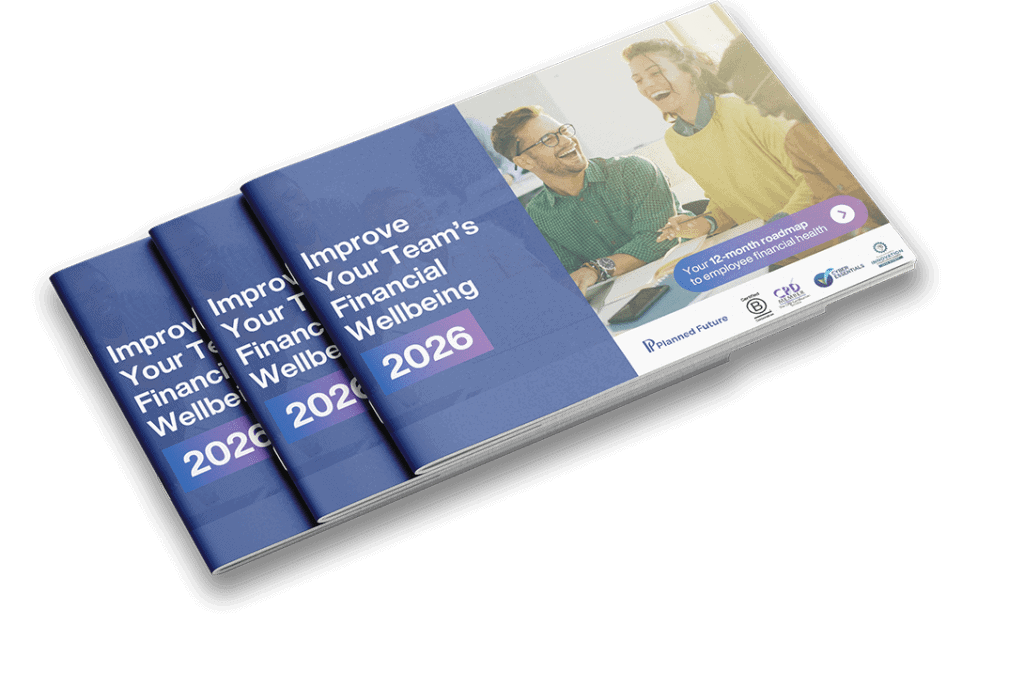In the ever-evolving landscape of the workplace, prioritising ways to improve employee wellbeing is not just an admirable goal—it’s a strategic imperative. 85% of employees want their employers to offer mental health and wellbeing support, yet just over half do.
As we step into 2024, this blog explores five informative and actionable ways to foster a positive and supportive work environment.

1) Implementing a Financial Wellbeing Strategy: Strengthening Employee Foundations
The connection between financial health and overall wellbeing is undeniable. In 2024, consider placing a spotlight on your employees’ financial wellness. Implementing a comprehensive strategy to improve employee wellbeing can be a game-changer.
Provide resources, workshops, and tools to help your workforce navigate the complexities of personal finance. By alleviating financial stress, you not only boost mental health but also enhance focus and productivity. A workforce with a solid financial foundation is a resilient and content one.
Learn a little more about how we can advise or offer a strategic wellbeing plan by getting in touch with our team.
2) Flexible Working Solutions: Balancing Act for Modern Living
The traditional 9-to-5 model is rapidly becoming a relic of the past. The majority of the working population (54%) currently works in a part-time or flexible role. 63% of full-time employees already work flexibly.
In 2024, embrace flexible working solutions that align with the needs of your diverse workforce. Whether it’s remote work options, flexible hours, or compressed workweeks, offering adaptability fosters a healthier work-life balance and can improve employee wellbeing.
This approach not only reduces stress but also demonstrates trust in your employees, leading to increased job satisfaction and mental wellbeing.
3) Mental Health Support Programs: Breaking the Stigma
Promote a culture of openness and destigmatize mental health in the workplace.
A Deloitte study found poor mental health accounts for over half of all work-related illnesses and more than 50% of long-term sick leave is due to stress, depression, or anxiety.
Introduce mental health support programs, including employee assistance programs (EAPs), counselling services, and awareness campaigns. Providing accessible resources for mental health encourages employees to seek help when needed, fostering an environment where mental wellbeing is a priority rather than a taboo subject.
4) Wellness Initiatives: Holistic Health to Improve Employee Wellbeing
Physical and mental health are intrinsically linked. In 2024, invest in comprehensive wellness initiatives that address both aspects. From fitness challenges and yoga classes to mindfulness workshops, create a holistic approach to employee wellbeing.
Encouraging regular breaks and promoting healthy habits can lead to increased energy levels, reduced stress, and improved overall mental health.
5) Recognition and Appreciation: The Power of Positive Reinforcement
Acknowledgment goes a long way in boosting morale and mental wellbeing. Establish a culture of recognition within your organisation. Implement regular feedback sessions, recognize achievements publicly, and celebrate milestones.
When employees feel valued and appreciated, their sense of purpose and job satisfaction increases, contributing to a positive mental outlook.
Improve Employee Wellbeing:
In 2024, as HR leaders in the UK, you have the opportunity to champion the cause of employee mental wellbeing. By implementing a wellbeing strategy, you not only enhance the quality of life for your workforce but also contribute to a more resilient, engaged, and productive organization.
Prioritise your employees’ mental health, and watch as your workplace transforms into a hub of positivity and success.
Everything in this blog post is intended as information and guidance only and should not be taken as formal financial advice.


